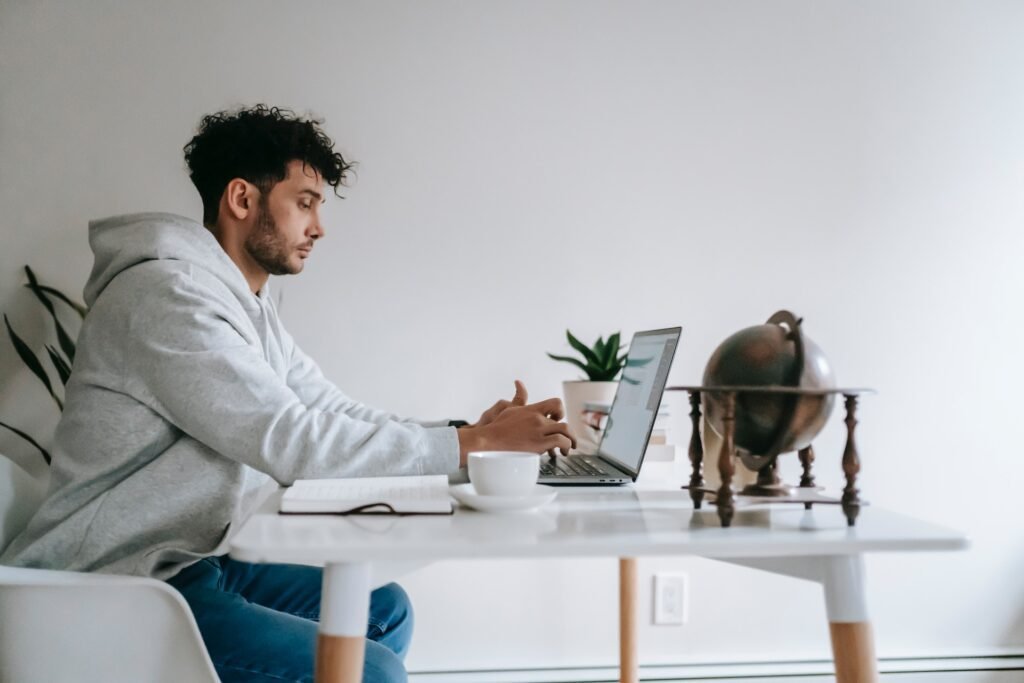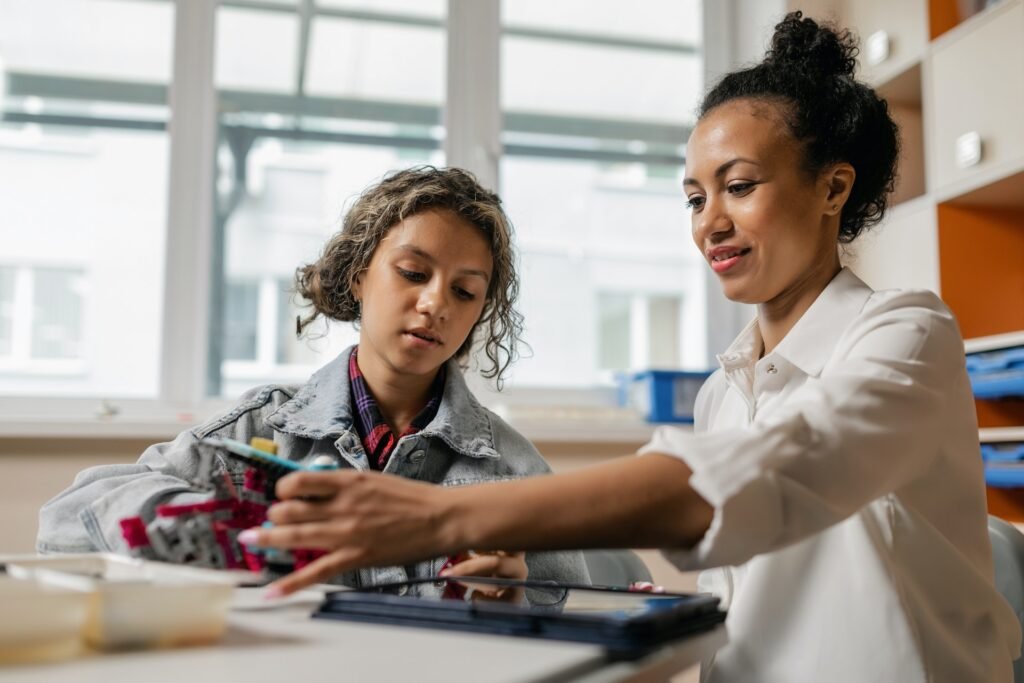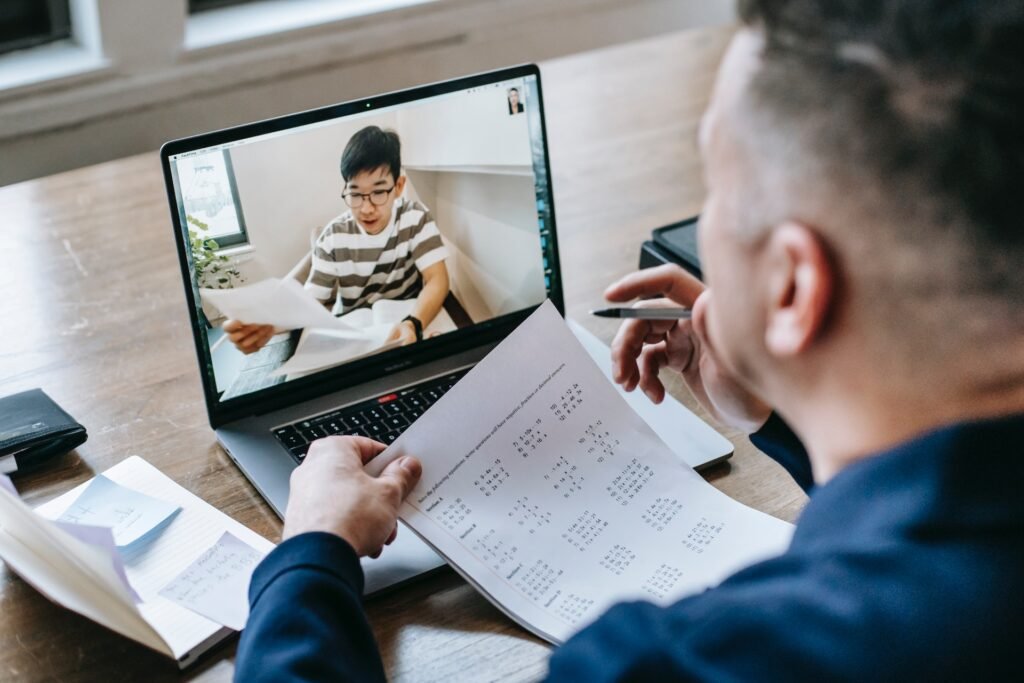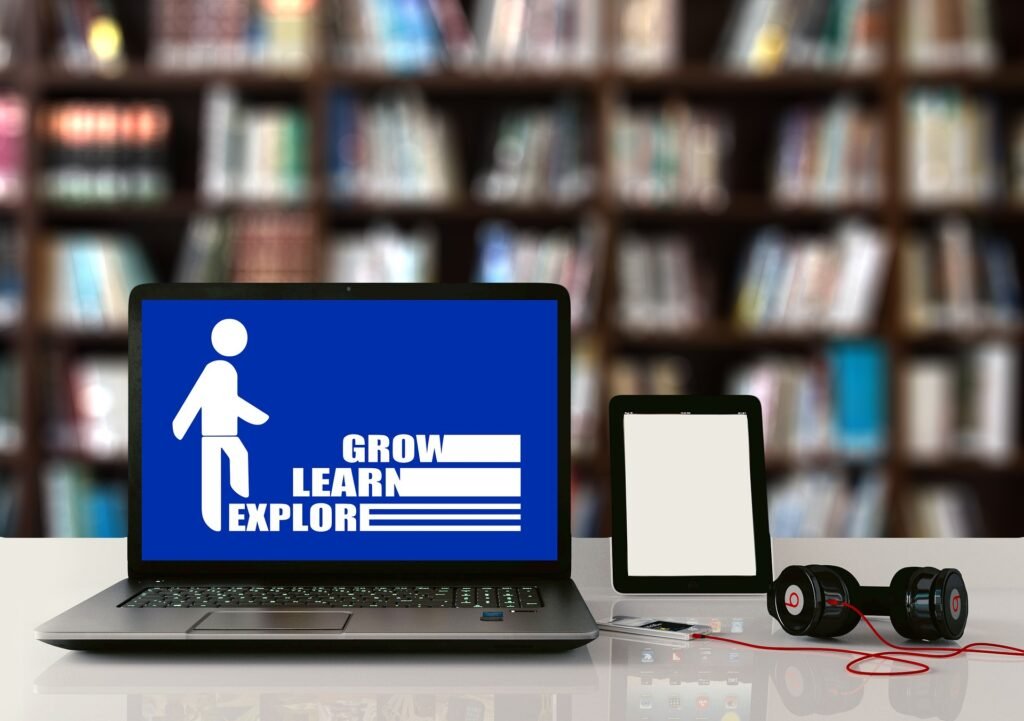Introduction to Education Dynamics – What It Is and How It Works
Successful learning begins with a desire for growth. To unlock one’s full potential, however, the right tools are required. Education Dynamics is such a tool, it is a powerful learning methodology that enables students of all ages to reach their highest potential. By leveraging individual student needs, using digital technology, and implementing varied approaches and strategies, a customized learning experience is created. This revolutionary methodology keeps up with the latest advances in education to ensure natural growth and success. With Education Dynamics, the journey to success is just a few steps away.

Begin your adventure today! This guide has lots – check out the table of contents for help getting around!
Table of Content
- EXPLORING THE BASICS OF EDUCATION DYNAMICS –DIFFERENTIATION, AND VARIATIONS
- BENEFITS OF EDUCATION DYNAMICS – INCREASED UNDERSTANDING, IMPROVED RETENTION, GREATER CONFIDENCE
- UNDERSTANDING STUDENT LEARNING STYLES – WHAT EDUCATORS NEED TO KNOW FOR OPTIMAL STUDENT SUCCESS
- DISCOVERING DIFFERENT EDUCATION DYNAMICS APPROACHES – GENERAL STRATEGIES AND IN-DEPTH GUIDANCE
- AN OVERVIEW OF EDUCATION DYNAMICS IN ACTION – WHAT ARE THE LATEST DEVELOPMENTS IN THE FIELD OF EDUCATION DYNAMICS?
- UTILIZING DIGITAL TECHNOLOGY – BRINGING EDUCATION DYNAMICS INTO THE 21ST CENTURY
- PREPARING FOR EDUCATION DYNAMICS – WHAT PARENTS, TEACHERS AND STUDENTS NEED TO KNOW TO GET STARTED
- ASSESSING PROGRESS – ANALYZING STUDENT LEARNING AND UNDERSTANDING
- RECOGNIZING CHALLENGES – MEETING THE UNIQUE NEEDS OF EVERY STUDENT
- IDENTIFYING RESOURCES – RESOURCES AND ONLINE CONTENT TO HELP WITH CURRICULUM DEVELOPMENT
- CONNECTING TO OTHER METHODS – LINKS TO DIFFERENT EDUCATIONAL FRAMEWORKS
- EXPLORING PROFESSIONAL DEVELOPMENT – STRATEGIES AND BEST PRACTICES FOR PROFESSIONAL EFFECTIVENESS
- EVALUATING STUDENT PERFORMANCE – TRADITIONAL AND ALTERNATIVE METHODS OF EVALUATION
- THE FUTURE OF EDUCATION DYNAMICS – WHAT’S NEXT IN THIS PROMISING FIELD?
- CONCLUSION – REINVIGORATING STUDENT LEARNING THROUGH EDUCATION DYNAMICS
Exploring the Basics of Education Dynamics – Differentiation, and Variations
Education Dynamics is a revolutionary methodology that has transformed the way students learn. It sought to bring meaning to the learning experience by emphasizing understanding rather than mere recall. Education Dynamics now focuses on dynamic learning environments that actively engage students, allowing them to internalize new concepts and apply them to future tasks. It utilizes a variety of methods and techniques tailored to individual students’ needs, and offers an array of approaches such as:
- Lecture
- Group projects and activities
- Online learning
- Hands-on learning
This comprehensive approach to instruction yields a more dynamic and engaging experience, stimulating learning and fostering real understanding.

Benefits of Education Dynamics – Increased Understanding, Improved Retention, Greater Confidence
Students, parents and educators are amongst the benefactors of the many riches of the Education Dynamics innovative approach to learning. Through customized instruction, assessment and strategic planning, it promotes greater understanding, improved retention and increased confidence. For students, Education Dynamics focuses on individualized learning plans, student-led inquiry and reflective practice. Through setting and achieving goals, engaging in experiential learning, and self-assessing understanding, they build confidence and develop deeper comprehension.

For teachers, it provides strategic planning, personalized coaching and classroom support. Parents can also benefit as it helps build awareness and involvement in student learning – offering support, resources and productive collaboration. Overall, Education Dynamics is a powerful learning methodology. It emphasizes personalized instruction and strategic planning, allowing students to gain deeper understanding and greater confidence.
Understanding Student Learning Styles – What Educators Need to Know for Optimal Student Success
Understanding student learning styles is an essential component to successful teaching. Knowing how students learn best is key to helping each one reach their potential. Education Dynamics is a powerful learning methodology that focuses on teaching and understanding student learning styles. By understanding how a student learns, educators can customize instruction accordingly.

Educators must recognize the visual, verbal, and kinesthetic learner in their classroom.
| Learning Style | Processing Method | Learning Strategy |
|---|---|---|
| Visual Learner | Processes information best when it is seen and written down | Use visual aids such as diagrams, charts, and videos; take notes and highlight important information |
| Verbal Learner | Discussing concepts out loud is helpful | Engage in class discussions and debates; repeat important concepts out loud to aid retention |
| Kinesthetic Learner | Being active, touching and manipulating objects helps understand concepts | Engage in hands-on activities; use manipulatives and interactive tools |
By recognizing learning styles, educators can plan instruction that will appeal to all students. Using a combination of visuals, writing, verbal discussion and activities is key. With each instructional style, educators need to be sure to provide verbal and written feedback to help students understand their progress and understanding. Education Dynamics encourages educators to be flexible and adaptive with their teaching to best help their students learn.
Discovering Different Education Dynamics Approaches – General Strategies and In-depth Guidance
Delve into the strategies of education dynamics to provide powerful learning experiences! This methodology focuses on developing students’ comprehension and retention of their studies and puts meaningful experiences with the material, exploration and student feedback at the heart of its approach. In-depth guidance details how to best utilize general strategies, from creating appropriate educational environments to designing lessons that engage and stretch critical thinking, and assess student performances.

Additionally, teaching resources such as technology and multimedia can be incorporated into this guidance for the best possible holistic learning experience, drawing upon educational theory, research and real-world application. With the help of general strategies, in-depth guidance, and a comprehensive framework, educators can ensure their education dynamics approach gives their students the most effective learning opportunities.
An Overview of Education Dynamics in Action – What are the latest developments in the field of education dynamics?
| Topic | Latest Developments in Education Dynamics |
|---|---|
| Adaptive learning technology | AI-based technology used for tracking students’ activities and providing personalized learning experiences |
| Big data analysis | Schools using big data to analyze student performance and identify areas of improvement |
| Gamification | Addition of fun and entertainment elements to traditional teaching and learning process, increasing engagement and learning outcomes |
| Virtual learning | Utilizing digital spaces and virtual learning due to the pandemic, changing the dynamics of school and learning |
Checkout our education galaxy blog for how this great tool helps to unlock limitless possibilities for learning!
Utilizing Digital Technology – Bringing Education Dynamics into the 21st Century
In the 21st century, utilizing digital technology to bring education dynamics into the classroom has become the norm.
| Topic | Benefits of Utilizing Digital Technology in Education |
|---|---|
| Bringing education dynamics into the 21st century | Keeps pace with technological advancements and prepares students for the modern workforce. |
| Facilitating student learning | Technology can enhance learning experiences by providing multimedia content, interactive activities, and personalized learning paths. |
| Personalizing educational experiences | Tailoring learning experiences to each student’s needs can help students learn at their own pace, focus on their interests, and achieve better learning outcomes. |
| Effective presentation of materials | Digital tools such as videos, podcasts, simulations, and virtual reality can enhance the delivery of course materials, making them more engaging and effective. |
| Reaching a wider range of students | Technology can connect educators with a larger audience, making education more accessible to students in remote or underserved areas. |
| Engaging with students in more meaningful ways | Digital technology can foster more engaging interactions between students and teachers through online discussions, collaborative projects, and real-time feedback. |
| Increasing access to various types of resources | Digital tools can expand the availability of resources, including open educational resources, digital libraries, and online databases. |
| Tracking and analyzing student progress | Digital technology can help educators monitor student progress, identify learning gaps, and provide timely interventions to support student success. |
| Customizing lesson plans and activities | Digital tools can help educators tailor instruction to meet student needs and preferences, enabling more effective differentiation and personalized learning. |
| Enhancing the educational experience | Utilizing digital technology provides dynamic and successful learning experiences that are engaging, interactive, and supportive of student learning. |
Preparing for Education Dynamics – What Parents, Teachers and Students Need to Know to Get Started
| Topic | Details |
|---|---|
| Purpose | To prepare for Education Dynamics and create a successful learning environment |
| Audience | Parents, teachers, and students |
| Parents | Should recognize the fundamentals of Education Dynamics and work with teachers to utilize them in the classroom |
| Teachers | Should use resources and online content, such as tailored lesson plans and activities adjusted to student needs. They should also be aware of student expectations and objectives and tailor the curriculum accordingly. Professional development and continued learning can help enhance skills and stay abreast of the latest trends |
| Students | Should understand their own learning styles, access suitable resources, and be aware of other educational frameworks like tutors or mentors to help them reach beyond the traditional classroom |
| Collaboration | The full potential of Education Dynamics can be achieved through the effort of parents, teachers, and students working together to ensure its effectiveness |
| Benefits | Can create a more enjoyable and productive learning experience with the proper understanding of the method and resources |
Assessing Progress – Analyzing Student Learning and Understanding
Assessing educational progress is an important part of the learning journey. Educators must properly monitor and track students’ comprehension in order to measure their mastery level and understand what they do and do not know. This can include informal observations, constant dialogue between teachers and students, and data from exams or other assessment methods. Through analyzing student data, teachers can inform instruction and tailor curriculum to each individual’s unique learning needs.

This process should ultimately focus on differentiating instruction, and assessing progress is fundamental to ensuring the appropriate instruction is provided depending on the student’s abilities. In order to accurately evaluate growth, teachers should look to make assessments as close to actual learning experiences as possible. Evaluating student learning regularly is essential in order to guarantee their educational needs are met.
Recognizing Challenges – Meeting the Unique Needs of Every Student
In Education Dynamics, it is essential to acknowledge and respond to the distinct needs of each student. Often, traditional educational systems cannot accommodate assorted student requirements, resulting in a one-size-fits-all model. Education Dynamics enables educators to recognize the individual needs of learners by providing resources and strategies tailored to each student’s capabilities and interests. This may include modifying lessons to suit each learner’s learning style, home language, culture, or past experiences.

Through acknowledging and helping to resolve the challenges encountered by each student, classrooms can become more encouraging and motivating environments. By achieving personal bests, students become energized and engaged. Education Dynamics can empower educators to effectively meet the one-of-a-kind needs of every learner.
Identifying Resources – Resources and Online Content to Help with Curriculum Development
Successful implementation of Education Dynamics in the classroom is dependent on teachers having access to the right resources. In order to ensure student learning is maximized, teachers need quality tools and resources to create effective curriculum and lesson plans. Thankfully, a wide range of online resources are available that are tailored to assist educators in making full use of Education Dynamics.
| Resource Name | Description |
|---|---|
| Google Classroom | An online platform that allows teachers to create and manage courses, distribute assignments, and communicate with students. https://edu.google.com/workspace-for-education/classroom/ |
| Khan Academy | Provides free online courses in a variety of subjects, including math, science, and history. Teachers can use the site to supplement their lesson plans or assign specific activities to students. https://www.khanacademy.org/ |
| Teachers Pay Teachers | A marketplace where teachers can buy and sell lesson plans, activities, and other classroom resources created by fellow educators. https://www.teacherspayteachers.com/ |
| Common Sense Education | Provides reviews and ratings of educational apps, games, and websites, as well as resources for teaching digital citizenship and internet safety. https://www.commonsense.org/education |
| Edutopia | A website that offers practical strategies and resources for improving K-12 education, including articles, videos, and case studies. https://www.edutopia.org/ |
| PBS LearningMedia | A free digital media library that offers thousands of educational resources, including videos, lesson plans, and interactive games, all aligned with state and national standards. https://www.pbslearningmedia.org/ |
There are also many online forums where teachers and students can gain insight into the best practices associated with Education Dynamics. Accessing the proper resources and utilizing them in a savvy manner is key to getting the most out of Education Dynamics and its associated advantages.
Connecting to Other Methods – Links to Different Educational Frameworks
Connecting Education Dynamics to other educational frameworks can provide necessary context to assess student learning and understanding. By understanding how methods like Direct Instruction, Guided Discovery and Inquiry-Based Learning relate to Education Dynamics, teachers can adapt their lesson plans to meet the needs of their students. This connection also allows students to gain a broader understanding of their world and become more capable problem solvers.
| Framework Name | Description |
|---|---|
| Direct Instruction | A teacher-led approach to instruction that involves breaking down concepts and skills into small, manageable steps and providing explicit instruction and feedback to students. |
| Guided Discovery | An instructional method that involves teachers providing guidance and support as students explore and discover new concepts and ideas on their own. |
| Inquiry-Based Learning | A student-centered approach to learning that involves asking questions, seeking answers, and developing knowledge and understanding through investigation and exploration. |
| Universal Design for Learning | A framework that promotes the use of multiple means of representation, expression, and engagement to create learning environments that are accessible and effective for all students, regardless of their abilities or backgrounds. |
| Culturally Responsive Teaching | An approach to teaching that acknowledges and values the cultural diversity of students, and seeks to create a classroom environment that is inclusive, respectful, and responsive to their needs and experiences. |
| Social and Emotional Learning | An approach to education that emphasizes the development of social and emotional skills, such as self-awareness, self-management, empathy, and responsible decision-making, alongside academic content. |
By exploring these different frameworks, it can help teachers identify individual needs, provide individuals with the resources and materials for meaningful, authentic learning activities and lead to more equitable and successful education systems. Ultimately, connecting Education Dynamics to other methods equips students with the knowledge and skills necessary to become successful learners.
Exploring Professional Development – Strategies and Best Practices for Professional Effectiveness
Professional Development (PD) is vital for the successful implementation of Education Dynamics. Through cautious professional learning initiatives, teachers acquire the skills required to appropriately utilize the Educational Dynamics methodology in their classroom. Strategies that can help teachers in this process include evaluating several differentiation models, learning styles and modalities, and recognizing varying needs.
In addition to formal PD, personalized guidance and support by professional mentors, supervisors, or peers can prove to be highly valuable feedback when studying student needs and implementing successful strategies. Researching across diverse educational communities, consulting literature and participating in conferences can also grant educators further insight.

PD is pivotal in order to ensure that teachers who use Educational Dynamics become more productive and confident in their roles. With the proper instruction, teachers can achieve optimal effectiveness. Professional development is thus essential for instructors who wish to achieve ideal results.
Evaluating Student Performance – Traditional and Alternative Methods of Evaluation
Evaluating student performance is critical for educational success. Education Dynamics combines traditional methods such as tests, assignments, and projects with alternative forms of assessment such as portfolios, simulations, and projects which gives teachers a more thorough understanding of student success.

Traditional evaluative strategies measure factual knowledge and alternative ones measure skills and competencies. Knowing and using both evaluation types allows educators to effectively implement appropriate assessment strategies. Results-oriented assessments also helps instructors to continually develop their classroom strategies to provide the best education possible.
The Future of Education Dynamics – What’s Next in This Promising Field?
The future of education dynamics is captivating, providing a plethora of opportunities for pupils, teachers, and parents. As technological advances disrupt conventional classrooms and digital learning becomes more commonplace, educators must remain informed of the emerging trends in the field of Education Dynamics to give learners the best quality education.

Digital technology, personalized instruction, and active involvement from both educators and students are a few of the most promising developments in Education Dynamics. With the introduction of customizable learning platforms and the integration of AI into curriculums, Education Dynamics is quickly evolving to meet the needs of students searching for the most effective method of education. Formative assessments and the integration of increasingly advanced technology into instruction enables teachers to make Education Dynamics intriguing, inspiring and productive for years to come.
Conclusion – Reinvigorating Student Learning Through Education Dynamics
The potential of education dynamics to reinvigorate and transform student learning is remarkable. Bringing together curriculum, consideration of student needs, and utilization of digital technology can create learning opportunities that are engaging, meaningful and impactful. Education dynamics has the capability to revolutionize modern education, encouraging teachers, motivating students, and creating an environment that allows for creative and flexible approaches to learning. This is an exciting time for education and the future of education dynamics is exceptionally bright.
Checkout our blog on: EDUCATION GALAXY – UNLOCKING LIMITLESS POSSIBILITIES FOR LEARNING

